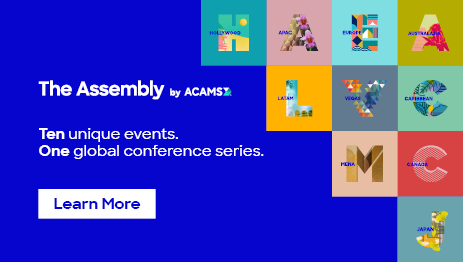News
Large US Banks Sharing Financial Intelligence Through Private Exchange
At least eight large U.S. banks have formed a private association to jointly investigate alleged financial crimes and networks of suspects whom federal law enforcement officials flag to them through section 314(a) of the Patriot Act, sources told ACAMS moneylaundering.com.
Relying on section 314(b) of the Patriot Act, which grants financial institutions and “any association of financial institutions” safe harbor to share details of clients and payments they suspect of ties to money laundering or terrorist financing schemes, the banks have exchanged “investigative resources,” link analysis and other information through a private platform.
“They use 314(a) to get targets from law enforcement, then they use 314(b) to do collaborative investigations,” Jim Richards, former head of Bank Secrecy Act compliance and financial-crimes risk management at Wells Fargo, said on a podcast hosted by Royal United Services Institute, or RUSI, in London six months ago.
Richards did not name the banks involved, say when the project began or comment further for this article, but Bill Heys, product manager for Verafin, a Canadian AML software vendor that manages the platform, provided more information during a Sept. 28 panel at the ACAMS AML & Financial Crime Conference in Las Vegas.
Heys confirmed that the association consists of several institutions “pooling their data” and cooperating with law enforcement “in real time” to identify large-scale networks suspected of generating and laundering millions of dollars in illicit revenue.
“At the end of the day that’s what law enforcement wants: a pretty picture with a link chart,” Heys told attendees of the conference. “That is so much more useful to them than trying to sift through dozens or thousands of SARs [suspicious activity reports], trying to connect these people together.”
Spokespersons for the eight largest U.S. banks by assets either declined to comment for this article or did not answer press inquiries.
The association described by Heys aligns with what bankers and other interested parties envisioned when writing the Patriot Act two decades ago, said John Byrne, who helped draft the legislation while working for the American Bankers Association.
“[Verafin] is basically renting the rooms for the banks to talk to one another,” Byrne, now executive vice president of AMLRight Source, a consultancy in Cleveland, told Heys while moderating the Sept. 28 panel in Las Vegas. “When we crafted 314(b), that was the design. We wanted associations, or consortiums, to be able to … accentuate information sharing.”
Enhanced cooperation between banks and law enforcement is hardly novel. Before closing shop in early 2019, the FBI’s Terrorist Financing Operation Section regularly provided financial institutions specific details on suspects and followed up with phone calls to specific banks.
Moneylaundering.com reported in October 2018 that at least eight money services businesses led by Western Union planned to use a common platform to share details of local agents they suspected of knowingly handling illicit funds or directly participating in fraud schemes.
“As a legal matter it’s pretty unremarkable … the rule from the beginning has allowed associations to share information under 314(b),” said Dan Stipano, a former senior official with the Office of the Comptroller of the Currency who is not involved in the data-sharing platform.
But the size of the banks involved and their ability to combine details of suspicious transactions makes the association especially noteworthy, said Stipano, now an attorney with the Davis Polk & Wardwell law firm in Washington, D.C.
Regulators have regularly supported financial intelligence-sharing arrangements between banks. In July 2012, FinCEN greenlit plans by financial institutions to exchange details of potential money laundering and terrorist financing with each other through their joint ownership of a limited liability company in Delaware.
Data-sharing arrangements garnered additional support last year, when FinCEN released a 7-page fact sheet that reaffirmed protections for associations of financial institutions seeking to form LLCs for reviewing suspicious transactions together, even when they can not conclusively link the payments to financial crime.
FinCEN’s guidance may have also triggered 314(b) requests for a broader range of information, such as details on counterparties of transactions that are not clearly tied to money laundering, according to a New York-based compliance officer for an Asian lender.
“Previously, institutions had been very sensitive to use it only for AML investigations, but now it’s evolved to where you can ask another institution know-your-customer [know-your-customer] type questions.”
Use of the 314(b) program has grown steadily since the adoption of the Patriot Act. The number of SARs referencing 314(b) in their narrative fields jumped 44 percent from 2015 to reach 16,000 in 2016, the bureau reported the following year.
Some compliance officers remain skeptical of the data-sharing mechanism’s effectiveness.
“We send these requests out and they just sit there,” Rebecca Schauer Robertson, director of financial investigation for Atlantic Union Bank in Virginia, said during the Sept. 28 panel in Las Vegas. “Then you have to make a decision … you may file something defensively if you haven’t heard back.”
Contact Daniel Bethencourt at dbethencourt@acams.org
| Topics : | Anti-money laundering , Counterterrorist Financing |
|---|---|
| Source: | Nonprofits/Private Organizations |
| Document Date: | October 8, 2021 |
